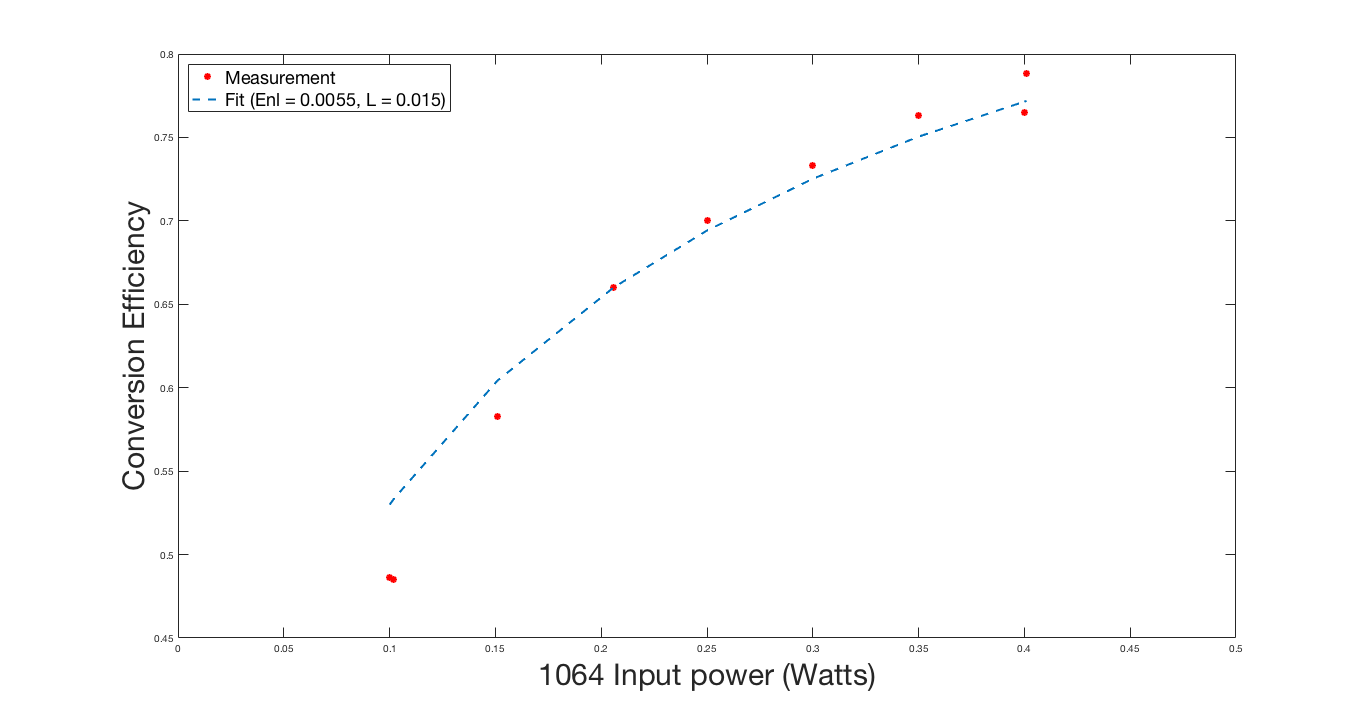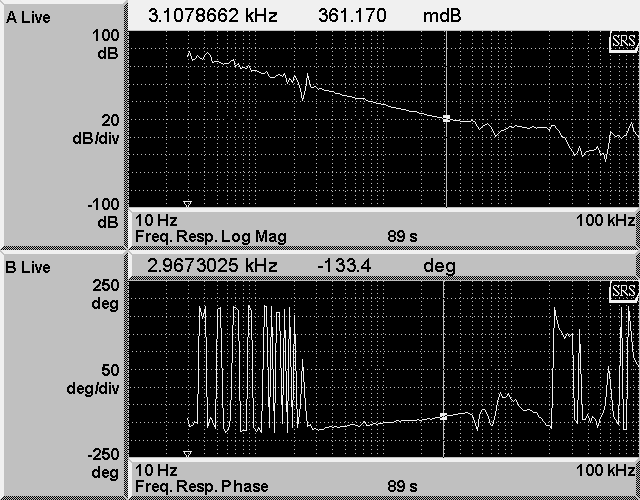Sheila, Nutsinee
Here I attached the SHG conversion efficiency measurement as a function of 1064 input power (red dots) plotted against theoretical prediction (the equation came from Polzik and Kimble 1991 paper on frequency doubling) . ~75% conversion efficiency at 400mW input, 48% conversion efficiency at 100mW input. For the fit I tweaked a couple parameters, intracavity losses (L) and the single-pass nonlinear conversion efficiency (Enl).

Here's everything I wrote down.
| P in (1064, mW) | P out (532, mW) | P trans (1064, mW) | Common mode board gain (dB) | responsivity (A/W) |
| 100 | 48.6 | 2 | 24 | |
| 151 | 88 | 2.6 | 23 | |
| 102 | 49.5 | 0.313 | ||
| 206 | 135.5 | 3.1 | 22 | |
| 250 | 175 | 3.45 | 22 | |
| 300 | 220.2 | 3.8 | 21 | 0.297 |
| 350 | 267 | 4.1 | 21 | |
| 400 | 306.5 | 22 | ||
| 401 | 315.5 | 4.5 | 22 | 0.293 |
The common mode board common path gain was adjusted to keep the UGF at 3kHz.
The responsivity was adjusted to match the photodiode readback to the power meter.
P in and P out was measured with a 1W Thorlabs power meter. P trans was read out of the photodiode.
The optimized crystal temperature for green output was the same for all input power, at 35.9 C
More SHG characterizations:
- Low rail = -10V, high rail 100V, actual usage: 0-85 V.
- 35.9 C nominal temperature, optimized for green output
- Mode matching: 96%. Can be better.
- PZT calibration: 52V/um
- PDH Vpp = 623 mV @2mW trans DC output.
- Open loop gain Transfer function: UGF ~3kHz. Nominal common path common mode board gain: 12dB




